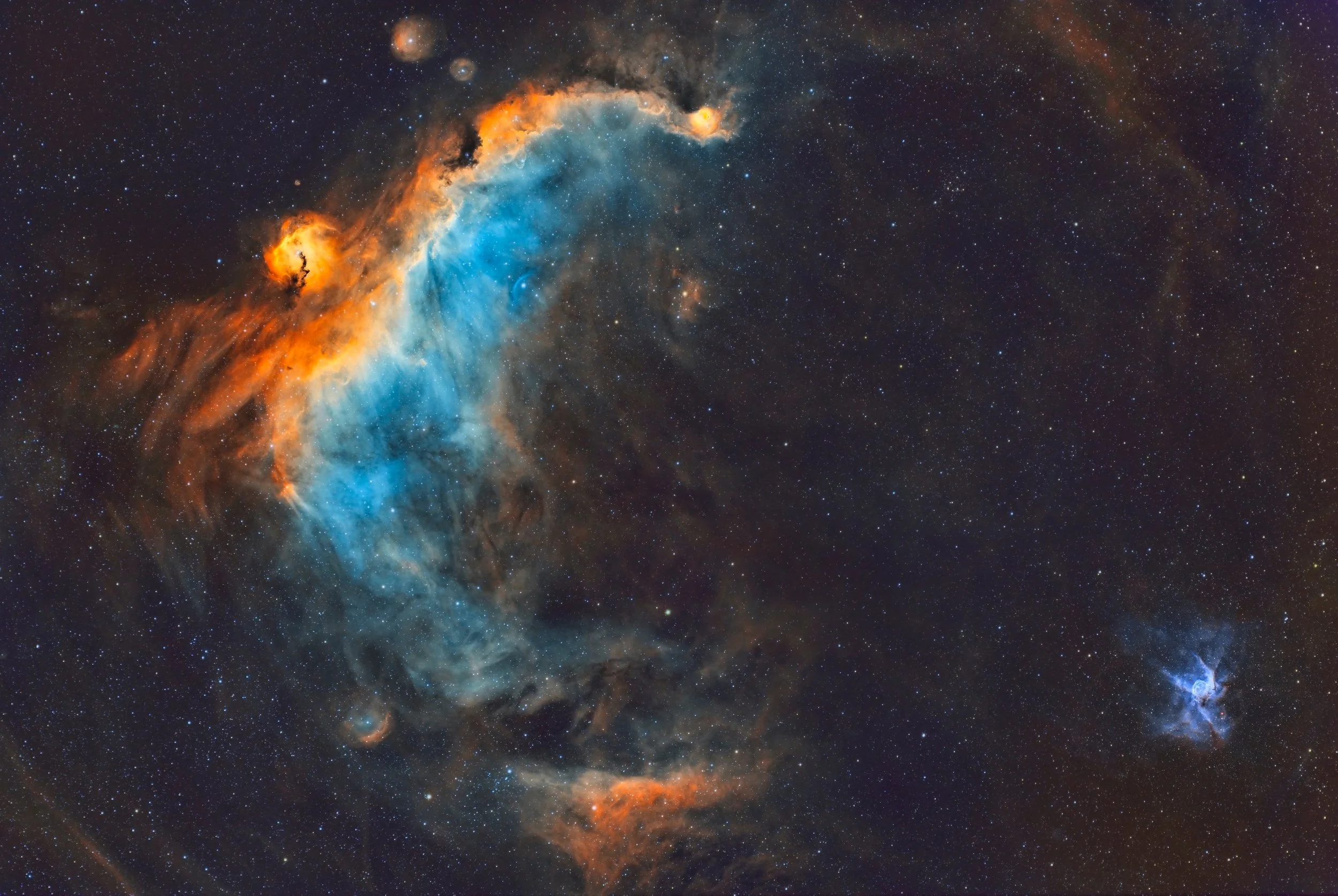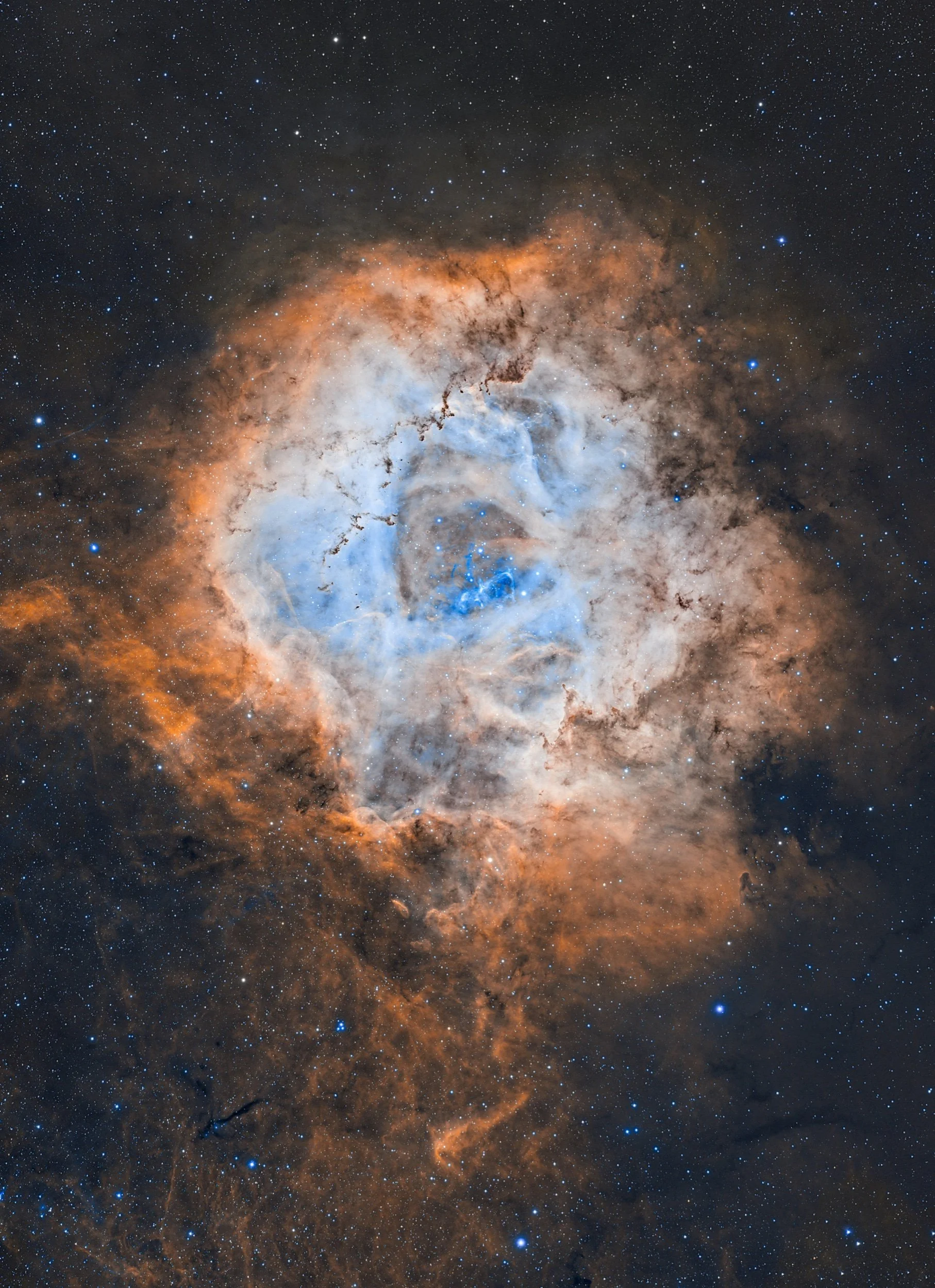
AAPOD2 Image Archives
NGC7000 and IC5070
Image Description and Details : 15 hours on NGC7000/IC5070 from the backyard with a 75mm refractor and QHY600MM! My first attempt at this target a few years ago was terrible so I couldn't wait to shoot it again. Spent 3 nights, one for each narrowband filter, and am happy with the result despite it being "only" 15 hours total.
Copyright: Antoine Grelin www.galactic-hunter.com
The Giant Vs. The Mighty
Image Description and Details :
This shows the huge Seagull Nebula, and the very small (in comparison) but bright Thor’s Helmet Nebula, in narrowband.
This is an image 2 years in the making. I spent 10 full nights on imaging the Seagull Nebula wide field, as I also wanted to include Thor’s Helmet in the frame. I then added an extra 2 nights worth of data using a larger telescope on Thor’s Helmet only. This allowed me to get a nicer view on that target. All the data acquired was by myself with my own gear.
The Seagull Nebula is known as IC 2177. It is a large nebula that can be found 3,650 light-years away in Monoceros. It is a great target for both broadband and narrowband imaging, and is very close to the much smaller Thor's Helmet Nebula.
If you look closely near the Oxygen gases of the Seagull Nebula, you should be able to spot a bright star with a strange arc-shaped line of gas just above it. This is commonly known as the "Bow shockwave" in IC 2177. It is believed to come from the interaction between the interstellar dust within the nebula, high radiation winds, and gas expelling from the double star system "FN CMa”. The exact origin is still not very clear, but we might learn more about it in the years to come!
Thor’s Helmet is known as NGC 2359. It is a cloud of interstellar gas, although very faint, the colors in the gases really pop when taking long exposure shots with any camera.
This beautiful deep-sky object gets its glow from WR7, a massive Wolf-Rayet star that will soon turn into a supernova.
This is a total of 61 hours of exposure, a record for me as my longest acquisition so far was 48 hours. I captured 99% of the data from the city, Bortle 9. I captured a little bit of the data (half a night) from a Bortle 4 spot in the desert for the OIII in Thor’s Helmet.
Acquisition Info:
Target: The Seagull Nebula and Thor Nebula
Imaged from: Las Vegas Bortle 9 + Nevada Desert Bortle 4 | January/February 2022
Camera: QHY600M
Filters: S+H+O for Seagull wide field, H+O for Thor’s Helmet
Telescope: Meade 70mm APO for Seagull wide field, SVX130 for Thor’s Helmet close up
Time per frame: 600sec
Time total: 61 hours total. 50 hours for the overall image wide field + an additional 11 hours for Thor’s Helmet close up.
Copyright: Antoine & Dalia Grelin
The Rosette Nebula in Bicolor
Image Description and Details : The Rosette Nebula, photographed in bicolor. The HA was taken from the city (Las Vegas Bortle 9), the OIII was taken from the desert (Bortle 4). The total exposure time is 20 hours.
Copyright: Antoine & Dalia Grelin
IC 5070/5067 - The Pelican Nebula
Image Information:
Observing Location: backyard, Las Vegas
Sky Conditions: Bortle zone 9
Object's Name or Designation: The Pelican Nebula
Telescope or Lens Used: Meade 115mm APO Astrograph
Camera: ZWO ASI 1600MM
Filters: Ha + Oiii + Sii
Exposure Time(s): 10 minutes per shot. 20 hours and 20 minutes total.
Special Techniques Used: Autoguiding (when it worked, half of the time)
Processed in Pixinsight
Other Comments or Description:
This image shows the bright and busy Pelican Nebula in Cygnus. There are lots of dark clouds visible in the image, as well as streaks of fainter clouds all throughout.
In “front” of the Pelican, near the bottom right can be seen several “Herbig-Haro” objects, which are jets of gasses and other matter being ejected at hundreds of miles per second by the newborn stars. One of the visible ones in the photo (the long thin pillar on the right of the blob) shows HH 555, the most active Herbig-Haro object in the Pelican Nebula.
These objects, when colliding with the surrounded dust of the nebula, create gigantic bright shock waves. These jets will disappears over time as they disperse in space.
Copyright Information: Antoine Grelin - Galactic Hunter




